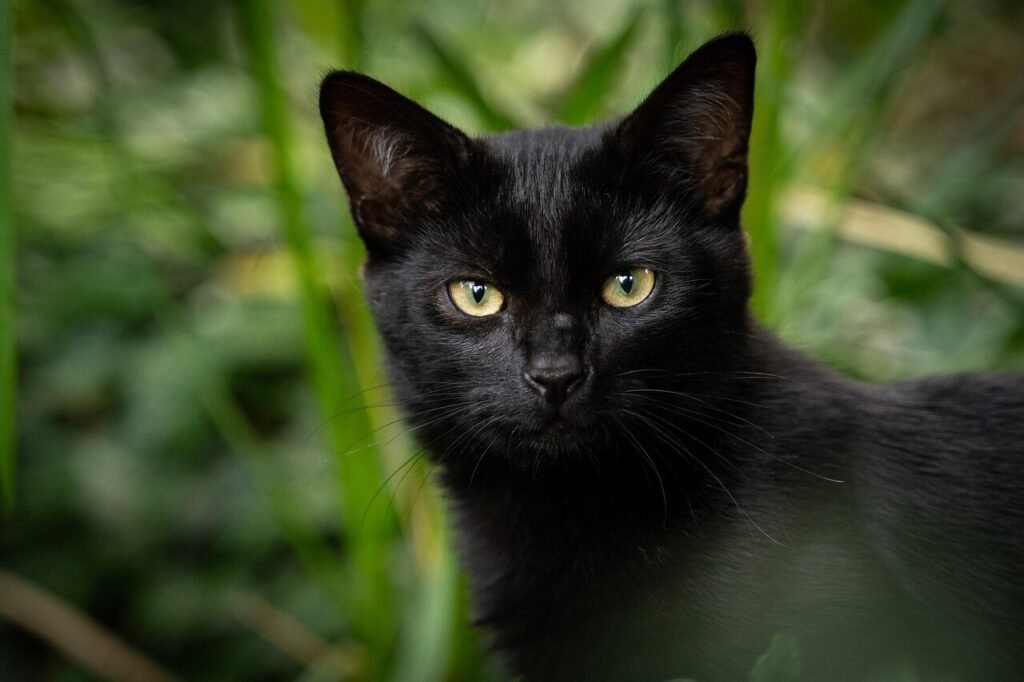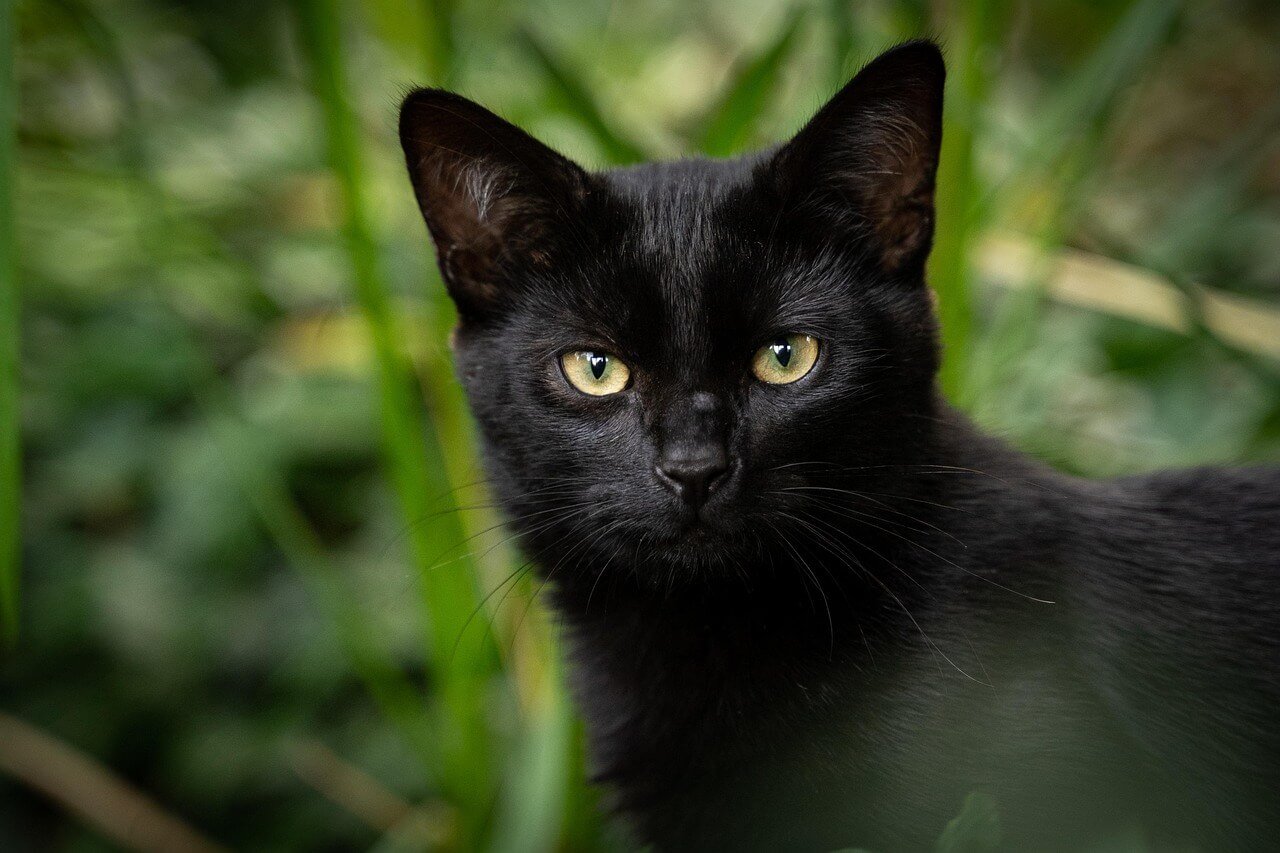Is the Corn Plant Cat Safe? What Every Pet Owner Should Know
Houseplants are a wonderful way to bring life and beauty into your home, but if you’re a cat owner, it’s essential to ensure that your greenery is safe for your feline friend. One popular plant, the corn plant (Dracaena fragrans), often raises questions among pet owners about its safety. While this lush, easy-to-care-for plant can brighten up any room, it poses potential risks to curious cats who might nibble on its leaves. In this blog post, we’ll explore whether the corn plant is cat-safe, what dangers it might pose, and how you can protect your furry companion while still enjoying indoor greenery. Let’s dive in and arm ourselves with the knowledge to create a pet-friendly home.
Why the Corn Plant Is Not Cat-Safe
The corn plant may look harmless, but it contains compounds that can be toxic to cats if ingested. Here’s why this plant is not considered cat-safe:
Contains Saponins
The corn plant produces saponins, natural compounds that can irritate a cat’s digestive system and cause adverse reactions.Causes Gastrointestinal Upset
Ingesting even small amounts of the plant can lead to vomiting, diarrhea, or drooling in cats.Potential for Lethargy
Cats exposed to the corn plant may become unusually tired or weak due to the toxins.Risk of Loss of Appetite
Toxins from the plant can make cats feel unwell, leading to a refusal to eat.Oral Irritation
Chewing on the leaves can cause irritation in the mouth, resulting in excessive drooling or pawing at the face.
While the corn plant is not highly toxic compared to some other plants, it’s still best to keep it out of reach of your cat. Prevention is key to ensuring your pet’s safety.
Symptoms of Corn Plant Poisoning in Cats
If your cat has ingested part of a corn plant, they may exhibit specific symptoms that indicate poisoning. Recognizing these signs early can help you seek prompt veterinary care. Here’s what to look for:
Vomiting
One of the most common symptoms, vomiting may occur shortly after ingestion.Excessive Drooling
Drooling is often a sign of oral irritation caused by the plant’s toxins.Diarrhea
Loose stools can indicate gastrointestinal distress from consuming the plant.Lethargy
A poisoned cat may appear unusually tired or reluctant to move.Loss of Appetite
Refusal to eat or drink is a concerning symptom that requires immediate attention.
If you notice any of these symptoms and suspect your cat has interacted with a corn plant, contact your veterinarian as soon as possible. Early intervention can prevent complications.
Check this guide 👉Are Birds of Paradise Toxic to Cats? Best 7 Expert Tips!
Check this guide 👉Are Roses Toxic to Cats? Best 7 Health Tips!
Check this guide 👉Are Aloe Plants Toxic to Cats? Best 7 Health Tips!

Symptoms of Corn Plant Poisoning | What You Should Do |
|---|---|
Vomiting | Monitor closely and contact your vet |
Excessive drooling | Rinse your cat’s mouth with water if safe |
Diarrhea | Prevent dehydration by offering water |
Lethargy | Keep your cat calm and avoid stress |
Loss of appetite | Seek veterinary care immediately |
How to Keep Your Cat Safe Around Houseplants
Creating a pet-safe environment doesn’t mean you have to give up all your houseplants. With a few precautions, you can enjoy greenery while keeping your cat out of harm’s way. Here are some tips:
Place Plants Out of Reach
Position the corn plant and other toxic plants on high shelves or hanging planters where your cat can’t access them.Use Cat Deterrents
Spray natural deterrents like citrus or vinegar around the base of plants to discourage chewing.Provide Safe Alternatives
Offer cat-friendly plants, such as cat grass or spider plants, to satisfy your cat’s curiosity.Supervise Playtime
Keep an eye on your cat when they’re near plants to prevent accidental ingestion.Educate Yourself About Toxic Plants
Research which plants are toxic to cats and remove them from your home or secure them properly.
By taking these steps, you can minimize risks and create a harmonious space for both your plants and your pets.
Cat-Friendly Alternatives to the Corn Plant
If you’re looking for houseplants that won’t harm your cat, there are plenty of beautiful and safe options to choose from. Here are some cat-friendly alternatives:
Spider Plant
This hardy plant is non-toxic and adds a touch of greenery to any room.Boston Fern
A lush, pet-safe option that thrives in humid environments.Areca Palm
This elegant palm is safe for cats and helps purify the air.Cat Grass
Specially grown for cats, this grass is safe for nibbling and provides enrichment.Calathea
With its striking patterns, the calathea is a stunning and non-toxic addition to your home.
These alternatives allow you to maintain a vibrant indoor garden without compromising your cat’s safety. Always double-check the toxicity of any plant before bringing it into your home.
Common Misconceptions About Cat-Safe Plants
There are many misconceptions about which plants are safe for cats, and these myths can sometimes lead to dangerous situations. Clearing up these misunderstandings is crucial for ensuring your cat’s safety. Here are some common misconceptions and the truth behind them:
Myth: All houseplants are safe for cats.
In reality, many popular houseplants, including the corn plant, are toxic to cats and should be kept out of reach.Myth: A small nibble won’t harm my cat.
Even a small amount of a toxic plant can cause adverse reactions, depending on the plant and the cat’s size.Myth: Cats instinctively avoid poisonous plants.
While some cats may avoid toxic plants, others are curious and may chew on them regardless of the danger.Myth: Only outdoor plants are harmful.
Many indoor plants, like Dracaena species, can be just as dangerous as outdoor plants if ingested.Myth: Washing leaves removes toxins.
Toxins in plants like the corn plant are part of their natural composition and cannot be removed by washing.
Understanding these facts can help you make informed decisions about which plants to keep in your home. Always prioritize research over assumptions when it comes to your cat’s safety.
Fun Facts About Cats and Plants
Cats have a unique relationship with plants, often driven by curiosity or instinct. Here are some fascinating facts about how cats interact with greenery:
Cats Are Attracted to Movement
The swaying leaves of plants like the corn plant can catch a cat’s attention and spark their hunting instincts.Chewing Grass Helps with Digestion
Cats often chew on grass or cat-safe plants to aid digestion or induce vomiting if they feel unwell.Some Cats Enjoy the Texture
Certain cats chew on leaves simply because they enjoy the texture or taste, even if it’s not beneficial.Plants Can Provide Enrichment
Safe plants can serve as a source of mental stimulation and enrichment for indoor cats.Cats May Use Plants as Hiding Spots
Larger plants can double as hiding spots or play areas for curious felines.
These fun facts highlight the complex and intriguing ways cats interact with plants. By understanding their behavior, you can better cater to their needs while keeping them safe.
Tips for Training Your Cat to Avoid Toxic Plants
If you’re determined to keep certain plants in your home, training your cat to avoid them can be a helpful strategy. Here are some tips to discourage your cat from interacting with toxic plants like the corn plant:
Use Positive Reinforcement
Reward your cat with treats or praise when they stay away from dangerous plants.Redirect Their Attention
Provide toys, scratching posts, or cat trees near the plant to redirect their focus.Create Physical Barriers
Use plant stands, cages, or hanging baskets to make the plant inaccessible to your cat.Apply Bitter Sprays
Non-toxic bitter sprays can be applied to plant leaves to deter chewing without harming your cat.Consistency Is Key
Be consistent with your training efforts to reinforce the message that certain plants are off-limits.
Training your cat requires patience and persistence, but it can be an effective way to protect them from harm. With time, your cat will learn to leave toxic plants alone while still enjoying the other enriching aspects of your home.
Frequently Asked Questions About Corn Plants and Cats
Is the corn plant toxic to cats?
Yes, the corn plant contains saponins that can be harmful if ingested by cats.
What should I do if my cat eats a corn plant?
Contact your veterinarian immediately and monitor your cat for symptoms like vomiting or lethargy.
Are all Dracaena plants toxic to cats?
Yes, all Dracaena species, including the corn plant, are considered toxic to cats.
Can I keep a corn plant if I have cats?
You can, but it must be placed out of reach or secured to prevent your cat from accessing it.
What are some safe plants for cats?
Spider plants, Boston ferns, and cat grass are excellent cat-safe options.
Creating a Safe and Beautiful Home for Your Cat
While the corn plant is not cat-safe, there are plenty of ways to enjoy houseplants without putting your feline friend at risk. By understanding the dangers of toxic plants and taking proactive measures, you can create a home that’s both stylish and pet-friendly. Whether you choose to relocate problematic plants or opt for cat-safe alternatives, your efforts will ensure your cat remains healthy and happy. Remember, a little research and planning go a long way in fostering a harmonious environment for all members of your household—furry or otherwise. With love and care, you can enjoy the beauty of nature while keeping your beloved companion safe.
Can a Cat Die from a Cold? Best 7 Expert Tips! Learn how to identify, treat, and prevent feline colds while understanding when to seek veterinary care for your cat’s health.
Cat Screaming for Food: Best 7 Expert Tips! Discover effective strategies to manage your cat's food-related vocalizations and create a peaceful feeding routine.
Aspiration Pneumonia in Cats: Best 7 Expert Tips! Discover causes, symptoms, and treatment advice to protect your cat’s respiratory health and ensure a speedy recovery.
Hip Dysplasia in Cats: Best 7 Expert Tips! Discover expert advice on managing hip dysplasia in cats, from symptoms and prevention to treatment options for a happier, healthier feline life.





